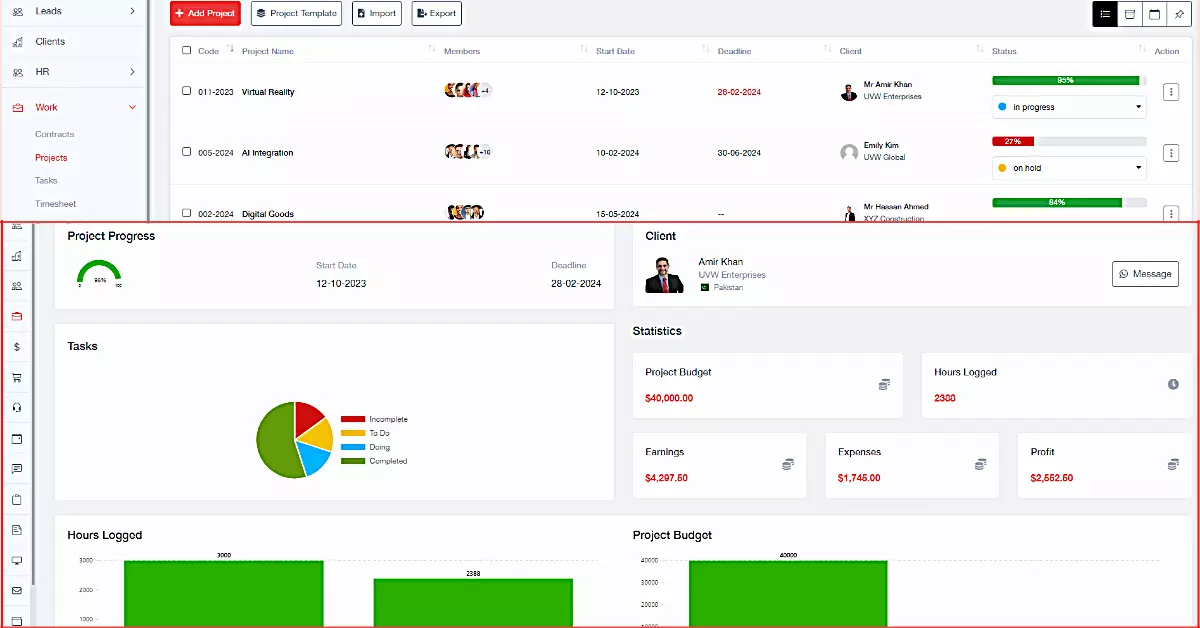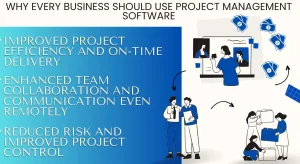Project management is like a guide for teams to do their work better. It’s changed a lot, and now, computer tools are used to make things easier. These tools help teams work together, talk easily, and find problems early to speed up work.
What’s really cool is that these computer tools can think a bit by themselves. They find problems before they happen and do some work without people. This makes everything smoother, so teams finish their work better and on time. Nowadays, software is vital for managing projects. It doesn’t just organize tasks but helps teams collaborate, analyze data, and plan ahead to avoid issues. Smart technology predicts problems and makes tasks easier. This mix of new ways of working and clever tech improves projects, helping teams handle tough things better for success.
What is The Need for Project Management?
Every modern-day business has many aspects that need to be handled on a daily basis, such as managing teams, meeting project goals, and ensuring efficient and smooth collaboration. But why use project management software? As businesses grow, the need for these tools are becoming inevitable,
Project Complexity in Modern Business
Projects in businesses today are getting more complicated. That’s because they involve many things happening at once, like working with people from different places, using new technology, and having tight deadlines.
To manage these tough projects, people use organized ways of working called Agile or Scrum. These methods help teams be flexible and change plans quickly when needed.
Special computer tools help a lot, too. They track tasks, manage who does what, and help teams talk and work together better. These tools also spot problems early and make sure everyone uses time and resources wisely. So, these tools make it easier for teams to handle the hard parts of projects. They help with tasks, teamwork, and making sure everything runs smoothly.
Efficient Collaboration and Communication
Good communication is vital for project success. It’s like a roadmap that keeps everyone on the same path. Clear goals and open conversations ensure everyone knows what to do. Technology plays a big role. Tools for messaging, file sharing, and shared schedules help teams work together. These tools ensure everyone is updated and aligned, improving collaboration and project outcomes
Leadership is important too. Good leaders guide the team and encourage everyone to share ideas. Transparency helps build trust, making teamwork smoother.
What Are The Essential Features of Project Management Software?

Task and Project Tracking
Real-time tracking is super important for project managers because it lets them keep an eye on progress all the time. Inside project management software, tools like visual dashboards, Gantt charts, or Kanban boards show tasks, deadlines, and team performance instantly.
For example, these tools give a quick view of what tasks are going well or might have problems. If something’s behind schedule, managers can catch it early and make quick decisions to fix it.
This helps prevent big issues later on. If someone is overwhelmed or a task is late, managers can act fast, adjust workloads, or get more help to keep things on track. These tools give managers the right information at the right time, helping projects stay successful.
There are several workload management software in the market which works fine. But there are lackings everywhere. Our UniTasker Pro is one of the best workload management tool in the market. We are confident that this tool will greatly benefit for task and project tracking.
Resource Management and Allocation
Managing resources well is super important for projects to run smoothly. Inside project management software, tools like resource scheduling and capacity planning help managers do this job.
These tools show who’s busy and who has space for more work. They make sure nobody gets too much or too little to do, preventing bottlenecks. For example, if someone’s overloaded, managers can see it early and adjust tasks or bring in extra help.
This balancing act ensures everyone works well without being overwhelmed. It keeps projects on track by using resources wisely, making sure everyone’s efforts count toward success.
Risk Management and Mitigation
Effective project management involves early identification and addressing of risks. Techniques like risk workshops, registers, and analysis methods like SWOT and PESTLE help anticipate and mitigate potential issues. Project management software such as Asana, Trello, or Microsoft Project aids in risk tracking, offering dashboards for teams to monitor and prioritize risks. These platforms enable real-time collaboration, alerts, and timely response to risks.
Some tools integrate specialized risk management software like RiskyProject for advanced risk analysis. Overall, project management software plays a crucial role in facilitating risk mitigation by providing centralized platforms for teams to document, collaborate, and respond to risks efficiently throughout the project lifecycle.
Enhanced Productivity and Efficiency
Automation significantly boosts productivity by simplifying tasks and saving time. Integrated into project management tools like Monday.com or Wrike, automation streamlines workflows with features such as task dependencies and automated notifications. Businesses leveraging Zapier or Integromat with project management software witness reduced manual data entry, minimizing errors, and freeing up resources for more crucial tasks.
Case studies highlight automation in tools like Jira or Basecamp, cutting project timelines by automatically assigning tasks based on predefined criteria. This reduces manual work, optimizing resources for essential activities. Automation’s role in reducing repetitive tasks and errors and expediting processes is evident, empowering teams to accomplish more with enhanced efficiency in project management.

What’s its Impact on Project Success?
- Proactive Decision-Making with Analytics
Using data and analysis in project management software is really important for teams. It helps them find problems early, plan better for using their resources, and make quicker decisions based on good information. When teams look at past data, they can predict what might go wrong, use their resources better, and fix issues before they become big problems. This helps them not only see where work might slow down but also makes everything work better overall.
For example, in a software project, using analytics can show where coding takes longer in certain parts. This helps move resources around to keep things going smoothly. Also, when teams find risks in parts of the project early, they can fix them before they become big problems. This helps the project stay on track and reach its goals smoothly. This way of using analytics helps solve problems before they cause trouble for the project, making it more likely to succeed.
- Measuring Success with Reporting Tools
Key Performance Indicators (KPIs) are like scorecards for projects, showing how well things are going. They’re different depending on what the project aims to do. They include things like sticking to the schedule, staying within the budget, using resources wisely, making stakeholders happy, and making sure the final work is good quality.
Looking at different examples helps us understand KPIs better. NASA’s Mars Rover and Toyota’s way of doing things show how important it is to stick to timelines and use resources well. Agile methods focus on finishing parts of the project on time and getting feedback from the people the project is for. And in remote work setups, good communication and finishing tasks matter a lot.
There are tools, like Jira, Trello, Power BI, and Tableau, that help keep an eye on these KPIs. They show how things are progressing and give quick insights using graphs and charts. Checking different sources, like reports and expert opinions, helps us stay updated on what’s changing in project management. This helps make projects better and improves how we handle them as things keep changing.
Encouraging companies to invest in effective project management methods and specialized computer tools is crucial. These approaches assist in planning tasks efficiently, optimizing resources, and addressing problems before they escalate. They also promote enhanced collaboration, smooth communication, and data-driven decision-making. Ultimately, such investments lead to increased productivity, risk reduction, and successful project completion within set timelines and budgets. It’s like having a secret weapon that makes sure everything runs well and that everyone is happy, opening the road to positive outcomes.



